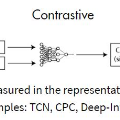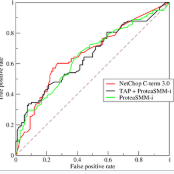Distracted driving is one of the major reasons for vehicle accidents. Therefore, detecting distracted driving behaviors is of paramount importance to reduce the millions of deaths and injuries occurring worldwide. Distracted or anomalous driving behaviors are deviations from 'normal' driving that need to be identified correctly to alert the driver. However, these driving behaviors do not comprise one specific type of driving style and their distribution can be different during the training and test phases of a classifier. We formulate this problem as a supervised contrastive learning approach to learn a visual representation to detect normal, and seen and unseen anomalous driving behaviors. We made a change to the standard contrastive loss function to adjust the similarity of negative pairs to aid the optimization. Normally, in a (self) supervised contrastive framework, the projection head layers are omitted during the test phase as the encoding layers are considered to contain general visual representative information. However, we assert that for a video-based supervised contrastive learning task, including a projection head can be beneficial. We showed our results on a driver anomaly detection dataset that contains 783 minutes of video recordings of normal and anomalous driving behaviors of 31 drivers from the various top and front cameras (both depth and infrared). Out of 9 video modalities combinations, our proposed contrastive approach improved the ROC AUC on 6 in comparison to the baseline models (from 4.23% to 8.91% for different modalities). We performed statistical tests that showed evidence that our proposed method performs better than the baseline contrastive learning setup. Finally, the results showed that the fusion of depth and infrared modalities from the top and front views achieved the best AUC ROC of 0.9738 and AUC PR of 0.9772.
翻译:偏心驾驶是车辆事故的主要原因之一。 因此, 发现分心驾驶行为对于减少全世界数百万人伤亡至关重要。 偏心或异常驾驶行为与“ 正常” 驱动方法不同, 需要正确识别, 以提醒驱动器。 但是, 这些驱动行为并不包含一种特定的驾驶风格类型, 在分类器的培训和测试阶段, 其分布可能不同。 我们把这个问题设计成一种有监督的对比学习方法, 以学习视觉显示正常、 可见和看不见的异常驾驶行为。 我们改变了标准的对比损失功能, 以调整负对子的相似性, 帮助优化。 通常, 在( 自我) 监管的对比框架中, 投影头层在测试阶段被忽略, 因为编码层被认为包含一般视觉代表信息。 然而, 我们主张, 以视频为基础的对比学习任务, 包括投影头。 我们用一个驱动器异常检测数据集展示了我们的结果, 包含783分钟的正常和反常态损失模式 。 通常情况下, 运行31个驱动器的升级模式, 展示了我们正常和反向前摄像头的升级的方法,, 显示从最深层的升级的升级的升级的升级的升级的升级的升级, 。




